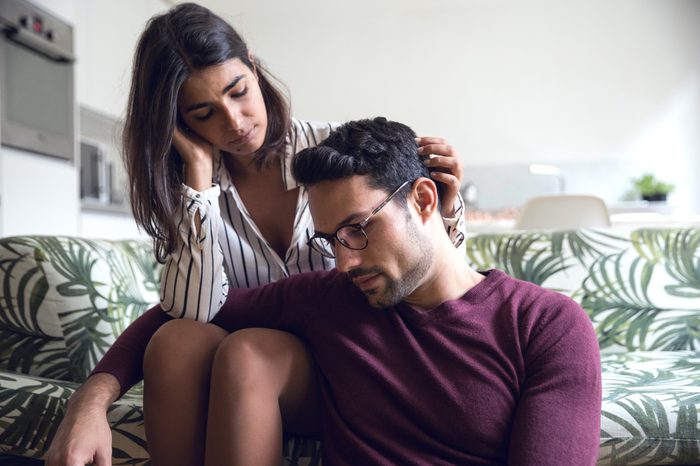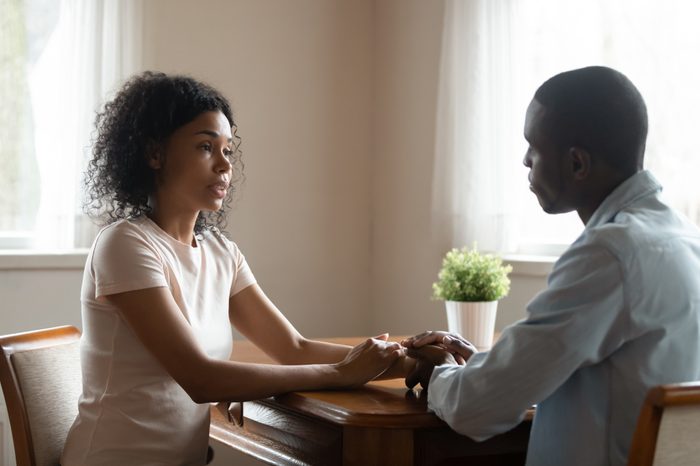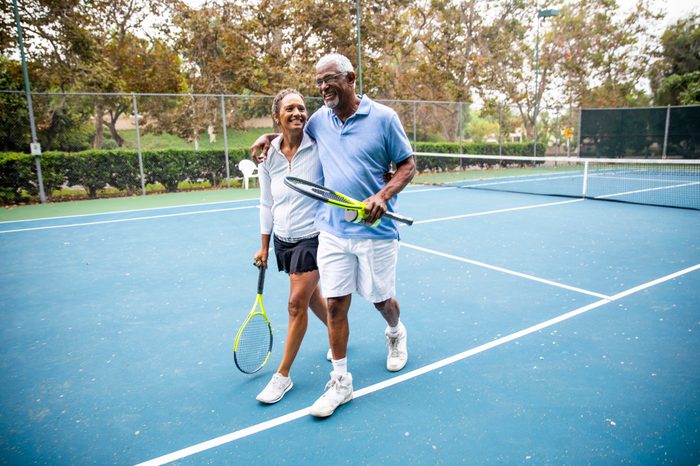You may have to sacrifice short-term comfort for longer-term gains
Many people who experience anxiety try to directly control or squash it, which then leads to a lot of avoidance behaviors, says Jonny Gerkin, MD, associate professor of psychiatry at the University of North Carolina School of Medicine in Chapel Hill. But staying away from the things that scare your partner or exacerbate their anxiety—be it parties or airplanes—isn’t going to help your partner get better. “That becomes a tricky situation for the partner because your initial intuition is to soothe and rescue them and enable the pattern of avoidance,” says Dr. Gerkin. “It feels very compassionate, but it perpetuates a lot of the difficulties.” Instead, find ways to support the person while they confront and move through their anxieties, if that’s possible. Ask your partner what he or she would be doing if the anxiety wasn’t surging, advises Dr. Gerkin. Find out how naturally calm people avoid stress.
Admit what you don’t know
There are many different types of anxiety disorders: In addition to GAD, there’s panic disorder, PTSD, social phobias, specific phobias like fear of heights, obsessive-compulsive disorder (OCD), and separation anxiety disorder—to name a few. Each has its own constellation of symptoms which, to complicate things even more, vary from individual to individual. The ADAA encourages you to speak up when you don’t understand what a partner is going through. “The first step in trying to help is to become aware,” says Beverly B. Palmer, PhD, professor emeritus of psychology at California State University, Dominguez Hills and author of Love Demystified: Strategies for a Successful Love Life. (Here are things only people with anxiety will understand.)
Let your partner “own” the anxiety
It’s more important for the partner with anxiety to learn to recognize when they feel anxiety rather than to rely on a partner’s (or anyone else’s) perception, says Palmer. Still, the non-anxious partner can get the ball rolling. One way is by reading and interpreting body language. “At the beginning, give a description of what you’re noticing in your partner with no adjectives,” she explains. This could be something like, “Right now, your body seems to be tensing up.” The partner may agree or disagree, but the question provides internal control over their condition. You can also suggest these phrases that help ease anxiety.































